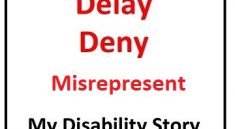Justice Ginsberg dissenting opinion on mandated arbitration in employee contracts, Arbitration agreements may be invalidated based on fraud
Epic Systems Corp. v. Lewis
Before the US Supreme Court
Justice Ginsburg, with whom Justice Breyer, Justice Sotomayor, and Justice Kagan join, dissenting.
“To explain why the Court’s decision is egregiously wrong, I first refer to the extreme imbalance once prevalent in our Nation’s workplaces, and Congress’ aim in the NLGA and the NLRA to place employers and employees on a more equal footing. I then explain why the Arbitration Act, sensibly read, does not shrink the NLRA’s protective sphere.”
“Despite the NLRA’s prohibitions, the employers in the cases now before the Court required their employees to sign contracts stipulating to submission of wage and hours claims to binding arbitration, and to do so only one-by-one.[2] When employees subsequently filed wage and hours claims in federal court and sought to invoke the collective-litigation procedures provided for in the FLSA and Federal Rules of Civil Procedure,[3] the employers moved to compel individual arbitration. The Arbitration Act, in their view, requires courts to enforce their take-it-or-leave-it arbitration agreements as written, including the collective-litigation abstinence demanded therein.
In resisting enforcement of the group-action foreclosures, the employees involved in this litigation do not urge that they must have access to a judicial forum.[4] They argue only that the NLRA prohibits their employers from denying them the right to pursue work-related claims in concert in any forum. If they may be stopped by employer-dictated terms from pursuing collective procedures in court, they maintain, they must at least have access to similar procedures in an arbitral forum.”
“Today’s decision rests largely on the Court’s finding in the Arbitration Act “emphatic directions” to enforce arbitration agreements according to their terms, including collective-litigation prohibitions. Ante, at 6. Nothing in the FAA or this Court’s case law, however, requires subordination of the NLRA’s protections. Before addressing the interaction between the two laws, I briefly recall the FAA’s history and the domain for which that Act was designed.”
“In recent decades, this Court has veered away from Congress’ intent simply to afford merchants a speedy and economical means of resolving commercial disputes. See Sternlight, Panacea or Corporate Tool?: Debunking the Supreme Court’s Preference for Binding Arbitration, 74 Wash. U. L. Q. 637, 644–674 (1996) (tracing the Court’s evolving interpretation of the FAA’s scope). In 1983, the Court declared, for the first time in the FAA’s then 58-year history, that the FAA evinces a “liberal federal policy favoring arbitration.”Moses H. Cone Memorial Hospital v. Mercury Constr. Corp.,460 U. S. 1, 24 (1983) (involving an arbitration agreement between a hospital and a construction contractor). Soon thereafter, the Court ruled, in a series of cases, that the FAA requires enforcement of agreements to arbitrate not only contract claims, but statutory claims as well. E.g., Mitsubishi Motors Corp. v. Soler Chrysler-Plymouth, Inc.,473 U. S. 614 (1985); Shearson/American Express Inc. v. McMahon,482 U. S. 220 (1987). Further, in 1991, the Court concluded in Gilmer v. Interstate/Johnson Lane Corp.,500 U. S. 20, 23 (1991), that the FAA requires enforcement of agreements to arbitrate claims arising under the Age Discrimination in Employment Act of 1967, a workplace antidiscrimination statute. Then, in 2001, the Court ruled in Circuit City Stores, Inc. v. Adams,532 U. S. 105, 109 (2001), that the Arbitration Act’s exemption for employment contracts should be construed narrowly, to exclude from the Act’s scope only transportation workers’ contracts.
Employers have availed themselves of the opportunity opened by court decisions expansively interpreting the Arbitration Act. Few employers imposed arbitration agreements on their employees in the early 1990’s. After Gilmer and Circuit City, however, employers’ exaction of arbitration clauses in employment contracts grew steadily. See, e.g., Economic Policy Institute (EPI),A. Colvin, The Growing Use of Mandatory Arbitration 1–2, 4 (Sept. 27, 2017), available at https://www.epi.org/files/pdf/135056.pdf (All Internet materials as visited May 18, 2018) (data indicate only 2.1% of nonunionized companies imposed mandatory arbitration agreements on their employees in 1992, but 53.9% do today). Moreover, in response to subsequent decisions addressing class arbitration,[12] employers have increasingly included in their arbitration agreements express group-action waivers. See Ruan 1129; Colvin, supra, at 6 (estimating that 23.1% of nonunionized employees are now subject to express class-action waivers in mandatory arbitration agreements). It is, therefore, this Court’s exorbitant application of the FAA—stretching it far beyond contractual disputes between merchants—that led the NLRB to confront, for the first time in 2012, the precise question whether employers can use arbitration agreements to insulate themselves from collective employment litigation. See D. R. Horton, 357 N. L. R. B. 2277 (2012), enf. denied in relevant part, 737 F. 3d 344 (CA5 2013). Compare ante, at 3–4 (suggesting the Board broke new ground in 2012 when it concluded that the NLRA prohibits employer-imposed arbitration agreements that mandate individual arbitration) with supra, at 10–11 (NLRB decisions recognizing a §7 right to engage in collective employment litigation), and supra, at 17, n. 8 (NLRB decisions finding employer-dictated waivers of §7 rights unlawful).
As I see it, in relatively recent years, the Court’s Arbitration Act decisions have taken many wrong turns. Yet, even accepting the Court’s decisions as they are, nothing compels the destructive result the Court reaches today. Cf. R. Bork, The Tempting of America 169 (1990) (“Judges . . . live on the slippery slope of analogies; they are not supposed to ski it to the bottom.”).
B
Through the Arbitration Act, Congress sought “to make arbitration agreements as enforceable as other contracts, but not more so.” Prima Paint, 388 U. S., at 404, n. 12. Congress thus provided in §2 of the FAA that the terms of a written arbitration agreement “shall be valid, irrevocable, and enforceable, save upon such grounds as exist at law or in equity for the revocation of any contract.”9 U. S. C. §2 (emphasis added). Pursuant to this “saving clause,” arbitration agreements and terms may be invalidated based on “generally applicable contract defenses, such as fraud, duress, or unconscionability.” Doctor’s Associates, Inc. v. Casarotto,517 U. S. 681, 687 (1996); see ante, at 7.
Illegality is a traditional, generally applicable contract defense. See 5 R. Lord, Williston on Contracts §12.1 (4th ed. 2009). “[A]uthorities from the earliest time to the present unanimously hold that no court will lend its assistance in any way towards carrying out the terms of an illegal contract.” Kaiser Steel,455 U. S., at 77 (quoting McMullen v. Hoffman,174 U. S. 639, 654 (1899)). For the reasons stated supra, at 8–17, I would hold that the arbitration agreements’ employer-dictated collective-litigation waivers are unlawful. By declining to enforce those adhesive waivers, courts would place them on the same footing as any other contract provision incompatible with controlling federal law. The FAA’s saving clause can thus achieve harmonization of the FAA and the NLRA without undermining federal labor policy.
The Court urges that our case law—most forcibly, AT&T Mobility LLC v. Concepcion,563 U. S. 333 (2011)—rules out reconciliation of the NLRA and the FAA through the latter’s saving clause. See ante, at 6–9. I disagree. True, the Court’s Arbitration Act decisions establish that the saving clause “offers no refuge” for defenses that discriminate against arbitration, “either by name or by more subtle methods.” Ante, at 7. The Court, therefore, has rejected saving clause salvage where state courts have invoked generally applicable contract defenses to discriminate “covertly” against arbitration. Kindred Nursing Centers L. P. v. Clark, 581 U. S. ___, ___ (2017) (slip op., at 5). In Concepcion, the Court held that the saving clause did not spare the California Supreme Court’s invocation of unconscionability doctrine to establish a rule blocking enforcement of class-action waivers in adhesive consumer contracts. 563 U. S., at 341–344, 346–352. Class proceedings, the Court said, would “sacrific[e] the principal advantage of arbitration—its informality—and mak[e] the process slower, more costly, and more likely to generate procedural morass than final judgment.” Id., at 348. Accordingly, the Court concluded, the California Supreme Court’s rule, though derived from unconscionability doctrine, impermissibly disfavored arbitration, and therefore could not stand. Id., at 346–352.
Here, however, the Court is not asked to apply a generally applicable contract defense to generate a rule discriminating against arbitration. At issue is application of the ordinarily superseding rule that “illegal promises will not be enforced,” Kaiser Steel, 455 U. S., at 77, to invalidate arbitration provisions at odds with the NLRA, a pathmarking federal statute. That statute neither discriminates against arbitration on its face, nor by covert operation. It requires invalidation of all employer-imposed contractual provisions prospectively waiving employees’ §7 rights. See supra, at 17, and n. 8; cf. Kindred Nursing Centers, 581 U. S., at ___, n. 2 (slip op., at 7, n. 2) (States may enforce generally applicable rules so long as they do not “single out arbitration” for disfavored treatment).”
“I note, finally, that individual arbitration of employee complaints can give rise to anomalous results. Arbitration agreements often include provisions requiring that outcomes be kept confidential or barring arbitrators from giving prior proceedings precedential effect. See, e.g., App. to Pet. for Cert. in No. 16–285, p. 34a (Epic’s agreement); App. in No. 16–300, p. 46 (Ernst & Young’s agreement). As a result, arbitrators may render conflicting awards in cases involving similarly situated employees—even employees working for the same employer. Arbitrators may resolve differently such questions as whether certain jobs are exempt from overtime laws. Cf. Encino Motor Cars, LLC v. Navarro, ante, p. ___ (Court divides on whether “service advisors” are exempt from overtime-pay requirements). With confidentiality and no-precedential-value provisions operative, irreconcilable answers would remain unchecked.”
Notes
“10 American Bar Association member Julius H. Cohen, credited with drafting the legislation, wrote shortly after the FAA’s passage that the law was designed to provide a means of dispute resolution “particularly adapted to the settlement of commercial disputes.” Cohen & Dayton, The New Federal Arbitration Law, 12 Va. L. Rev. 265, 279 (1926). Arbitration, he and a colleague explained, is “peculiarly suited to the disposition of the ordinary disputes between merchants as to questions of fact—quantity, quality, time of delivery, compliance with terms of payment, excuses for non-performance, and the like.” Id., at 281. “It has a place also,” they noted, “in the determination of the simpler questions of law” that “arise out of th[e] daily relations between merchants, [for example,] the passage of title, [and] the existence of warranties.” Ibid.”
“15 Based on a 2015 study, the Bureau of Consumer Financial Protection found that “pre-dispute arbitration agreements are being widely used to prevent consumers from seeking relief from legal violations on a class basis, and that consumers rarely file individual lawsuits or arbitration cases to obtain such relief.” 82 Fed. Reg. 33210 (2017).”
https://www.supremecourt.gov/opinions/17pdf/16-285_q8l1.pdf#page=32



